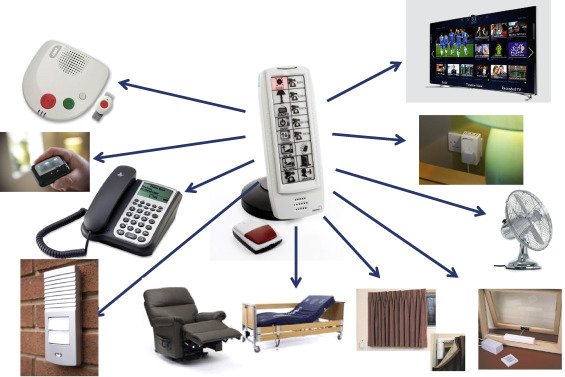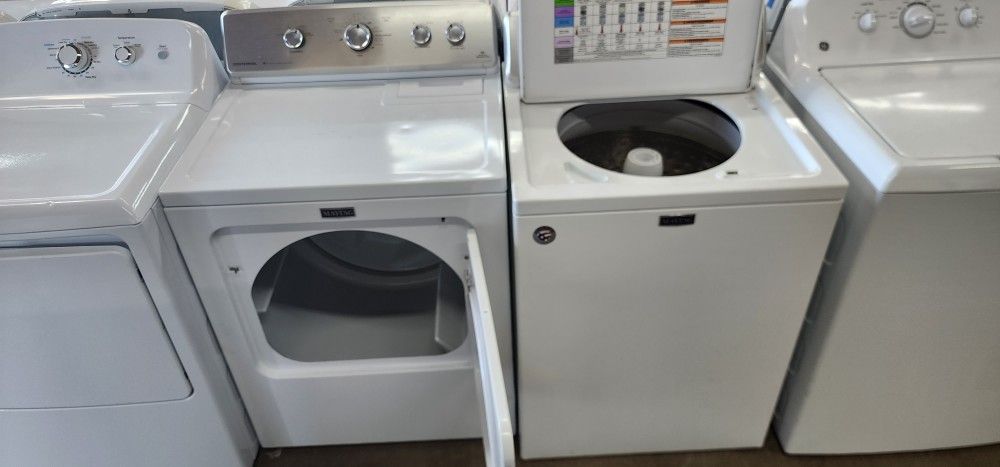Now Reading: A Guide to Environmental Control Technology
-
01
A Guide to Environmental Control Technology
A Guide to Environmental Control Technology

Have you ever wondered how large buildings stay cool in the summer and warm in the winter without wasting tons of energy? Or how factories keep harmful pollution from escaping into the air and water? The answer lies in a fascinating field known as environmental control technology. This is the science and engineering dedicated to managing our surroundings, making them safer, more comfortable, and sustainable. It’s all about using smart tools and systems to protect both people and the planet.
This technology is a huge part of our modern world, working behind the scenes in our homes, schools, and workplaces. It helps us breathe cleaner air, drink safer water, and reduce our overall impact on the environment. From simple thermostats to complex industrial scrubbers, environmental control technology is a powerful force for good. We will explore what this technology is, how it works, and the incredible ways it’s shaping a greener future for everyone.
Key Takeaways
- What it is: Environmental control technology includes all the tools, systems, and methods used to manage and protect our immediate environment and the planet.
- Why it Matters: It is essential for public health, conserving natural resources, reducing pollution, and combating climate change.
- Where it’s Used: This technology is found everywhere, from residential homes and commercial buildings to large-scale industrial facilities and city-wide waste management systems.
- Major Types: Key areas include air pollution control, water and wastewater treatment, solid waste management, and energy efficiency systems.
- The Future is Green: Innovations in this field, such as smart sensors and AI, are making environmental protection more efficient and effective than ever before.
What Exactly Is Environmental Control Technology?
At its core, environmental control technology is a broad term for the equipment and methods we use to monitor and manage our physical environment. Think of it as humanity’s toolkit for creating healthier living and working spaces while minimizing our negative impact on the natural world. This field combines principles from engineering, chemistry, biology, and computer science to solve some of the most pressing challenges we face, such as pollution and resource depletion. The goal is to create a balance where human activities can coexist with a healthy planet.
This technology isn’t just one single thing; it’s a collection of many different solutions. For example, in a large office building, it includes the heating, ventilation, and air conditioning (HVAC) system that keeps the air fresh and the temperature just right. In a manufacturing plant, it could be a system that captures and neutralizes harmful chemicals before they are released. Even the recycling bin in your kitchen is part of a larger environmental control technology system designed to manage solid waste. It’s all about applying scientific knowledge to create practical solutions for environmental problems.
The Main Goals of This Technology
The primary purpose of environmental control technology is to protect both human health and the environment. This is achieved through several key objectives. First and foremost is pollution prevention and control. This means stopping pollutants at their source or capturing them before they can cause harm. Another major goal is resource conservation, which involves using resources like water and energy more efficiently to reduce waste. Finally, this technology aims to create safe and comfortable indoor environments, ensuring that the air we breathe inside is clean and healthy. These goals are interconnected, as reducing energy use, for instance, also helps to lower air pollution from power plants.
A Brief History of Environmental Control
The concept of managing our environment isn’t new. Ancient civilizations developed aqueducts to manage water and ventilation shafts to cool buildings. However, the modern field of environmental control technology really took off during the Industrial Revolution. As factories filled the air with smoke and cities grew crowded, people recognized the need for new ways to manage waste and pollution. The 20th century saw major advancements, driven by a growing awareness of environmental issues. The creation of government agencies like the Environmental Protection Agency (EPA) in the United States spurred innovation, leading to the development of the sophisticated systems we rely on today.
The Major Pillars of Environmental Control Technology
This vast field can be broken down into several key areas. Each pillar focuses on a different aspect of our environment, but they often work together to provide comprehensive protection. Understanding these pillars helps to see the full scope and importance of environmental control technology.
1. Air Pollution Control
Keeping our air clean is one of the most critical jobs of environmental control technology. Air pollution comes from many sources, including vehicle exhaust, industrial emissions, and even natural events like wildfires. The technology used to combat this includes everything from catalytic converters in our cars to massive “scrubbers” in factory smokestacks. These devices work by capturing pollutants like sulfur dioxide, nitrogen oxides, and particulate matter before they enter the atmosphere. Inside our homes and offices, air purifiers and advanced HVAC filtration systems perform a similar function on a smaller scale, removing allergens, dust, and other contaminants to improve indoor air quality.
Technologies for Cleaner Air
- Scrubbers: These systems use a liquid spray to wash pollutants out of industrial exhaust gases.
- Electrostatic Precipitators: These devices use an electric charge to attract and capture dust and smoke particles.
- Catalytic Converters: Found in cars, they convert harmful gases like carbon monoxide into less harmful substances like carbon dioxide and water.
- Carbon Capture: An emerging environmental control technology that traps carbon dioxide emissions from power plants and factories, preventing them from entering the atmosphere.
2. Water and Wastewater Treatment
Safe, clean water is essential for life. Environmental control technology plays a vital role in both purifying our drinking water and treating wastewater so it can be safely returned to the environment. Drinking water treatment plants use a multi-step process that includes coagulation, sedimentation, filtration, and disinfection to remove contaminants and kill harmful bacteria. On the other end, wastewater treatment facilities handle sewage and industrial effluent. They use physical, biological, and chemical processes to break down waste and remove pollutants, protecting our rivers, lakes, and oceans from contamination. These systems are unsung heroes of public health.
3. Solid Waste Management
Every year, humanity produces billions of tons of solid waste. Managing this “trash” is a huge logistical and environmental challenge. Modern solid waste management is a sophisticated form of environmental control technology that focuses on the “3 Rs”: Reduce, Reuse, and Recycle. Technologies in this area include advanced sorting systems at recycling centers that use magnets, air jets, and optical scanners to separate different materials. Another key technology is waste-to-energy incineration, where non-recyclable trash is burned in a controlled environment to generate electricity. Properly designed landfills are also a form of this technology, engineered with liners and collection systems to prevent pollutants from leaking into the surrounding soil and groundwater.
4. Noise Abatement and Control
While often overlooked, noise pollution is a serious environmental issue that can affect human health and wildlife. Environmental control technology for noise abatement aims to reduce or absorb unwanted sound. This can be seen in the sound-dampening walls built alongside highways to protect nearby neighborhoods from traffic noise. In industrial settings, machinery is often enclosed in soundproof casings. Even the design of buildings and the materials used in their construction, such as triple-pane windows and acoustic insulation, are forms of noise control technology. The goal is to create quieter, less stressful environments for everyone.
How Environmental Control Technology Works in Buildings
Our homes, schools, and offices are prime examples of where environmental control technology is at work every day. The systems that keep us comfortable and safe are often called building automation systems.
Heating, Ventilation, and Air Conditioning (HVAC)
The most prominent example is the HVAC system. Modern HVAC systems do much more than just heat and cool the air. They are a complete environmental control technology suite for indoor spaces. They control temperature, manage humidity levels, and circulate fresh air, all while filtering out dust, pollen, and other allergens. Energy efficiency is a huge focus of modern HVAC design. Using technologies like variable-speed motors, smart thermostats, and zoning systems (which cool or heat only the rooms that are being used), today’s HVAC systems can provide superior comfort while using significantly less energy than older models. This reduces both utility bills and the building’s carbon footprint.
Smart Buildings and Automation
The next evolution in building management is the “smart building.” These buildings use a network of sensors, controllers, and software to automate and optimize building functions. A smart building’s environmental control technology can adjust lighting based on the amount of natural daylight available, change the temperature when it senses a room is empty, and even monitor air quality in real-time, increasing ventilation when CO2 levels rise. This level of automation not only creates a more comfortable and productive environment for occupants but also achieves incredible levels of energy efficiency. It represents a fully integrated approach to managing the indoor environment.
Common Environmental Technologies in Buildings
|
Technology |
Primary Function |
Key Benefit |
|---|---|---|
|
Smart Thermostat |
Learns occupancy patterns to optimize heating/cooling schedules. |
Reduces energy waste by not heating/cooling an empty home. |
|
LED Lighting |
Provides high-quality light using very little electricity. |
Significant energy savings and longer bulb lifespan. |
|
Low-E Windows |
Have a special coating to reflect heat but let light through. |
Keeps buildings cooler in summer and warmer in winter. |
|
Air Quality Sensors |
Monitor levels of CO2, VOCs, and particulate matter. |
Automatically adjusts ventilation to ensure healthy indoor air. |
|
Rainwater Harvesting |
Collects and stores rainwater for non-potable uses. |
Conserves municipal water supplies and reduces stormwater runoff. |
The Future of Environmental Control Technology
The field of environmental control technology is constantly evolving, driven by new scientific discoveries and the urgent need to address global challenges like climate change. The future looks incredibly promising, with innovations that will make our control systems smarter, more efficient, and more effective.
The Role of AI and the Internet of Things (IoT)

Artificial Intelligence (AI) and the Internet of Things (IoT) are set to revolutionize environmental control technology. IoT involves a vast network of internet-connected sensors that can gather massive amounts of data about our environment in real-time. For example, sensors placed throughout a city could monitor air quality street by street, while sensors in a river could detect pollution the moment it occurs. AI can then analyze this data to identify patterns, predict problems before they happen, and optimize control systems. Imagine a smart electrical grid that uses AI to predict energy demand and route power from renewable sources, or a wastewater treatment plant that uses AI to adjust its processes for maximum efficiency.
Nanotechnology and New Materials
Another exciting frontier is nanotechnology. Scientists are developing new materials at the atomic level that have amazing environmental applications. For instance, nano-filters could be created that can remove even the tiniest contaminants from water, making it safe to drink. Other nanomaterials could be used to create more efficient solar panels or catalysts that break down pollutants into harmless substances. These advancements promise to provide us with powerful new tools in our environmental control technology toolkit. As experts at platforms like Forbes Planet often discuss, these material science breakthroughs are fundamental to building a sustainable future.
Conclusion
From the air we breathe in our homes to the water we drink from our taps, environmental control technology is an essential and often invisible force that protects our health and our planet. It represents our collective effort to apply science and ingenuity to solve some of the most fundamental challenges of modern life. By controlling pollution, conserving resources, and creating efficient, healthy living spaces, this technology allows us to enjoy a high quality of life while being better stewards of the natural world.
As we face growing environmental pressures, the importance of this field will only increase. The ongoing innovations in smart technology, AI, and material science promise a future where our ability to manage our environment is more precise and powerful than ever before. Supporting the development and implementation of advanced environmental control technology is an investment in a cleaner, safer, and more sustainable world for generations to come.
Frequently Asked Questions (FAQ)
Q1: Is a home thermostat a type of environmental control technology?
A1: Yes, absolutely! A thermostat is a basic but very important form of environmental control technology. It monitors and controls the temperature in your home, which is a key aspect of managing your indoor environment. Smart thermostats take this a step further by optimizing energy use for greater efficiency.
Q2: How does environmental control technology help fight climate change?
A2: It helps in several key ways. Firstly, technologies that improve energy efficiency, like LED lighting and modern HVAC systems, reduce the amount of energy we need to produce, which lowers greenhouse gas emissions. Secondly, technologies like carbon capture and storage directly remove CO2 from emissions. Finally, effective waste management, especially controlling methane from landfills, also reduces potent greenhouse gases.
Q3: What career opportunities are available in this field?
A3: There is a wide range of careers in environmental control technology. These include environmental engineers who design pollution control systems, HVAC technicians who install and maintain building systems, building automation specialists who manage smart building technology, and environmental scientists who monitor air and water quality. It’s a growing field with many opportunities.
Q4: Can I implement environmental control technology in my own home?
A4: Yes, there are many things you can do. Upgrading to a smart thermostat, switching to energy-efficient LED light bulbs, using a home air purifier, and ensuring your home is well-insulated are all practical ways to use environmental control technology to create a healthier, more efficient living space.
Q5: What is the difference between environmental technology and environmental control technology?
A5: The terms are closely related and often used interchangeably. However, “environmental technology” is a very broad term that can include everything from renewable energy to sustainable agriculture. “Environmental control technology” is more specific, typically referring to the technologies used to actively manage and control the conditions of a specific environment, whether it’s the air in a building or the emissions from a factory.
















